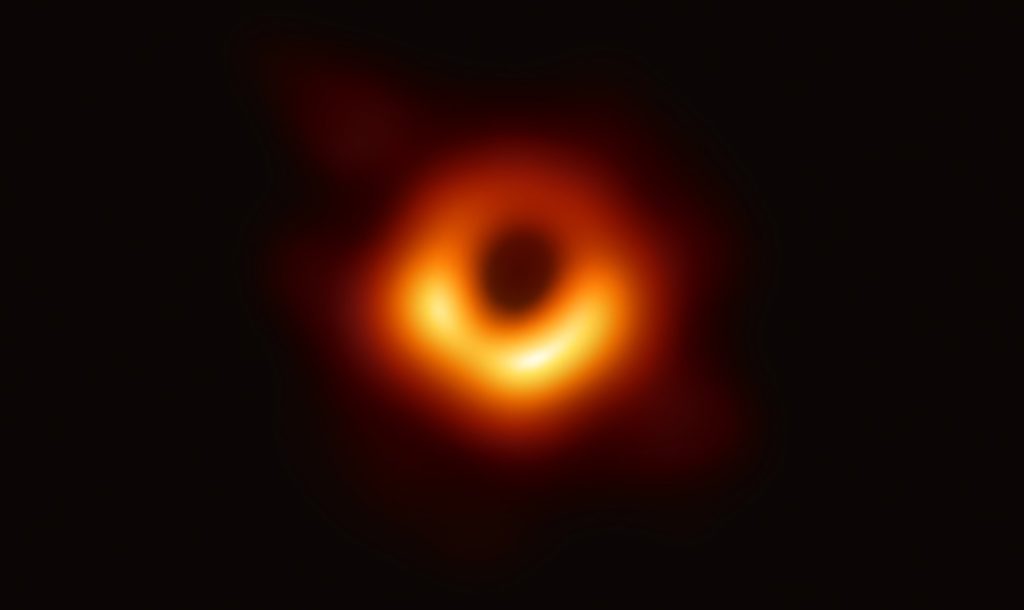
How cool is it that we now have an actual image of the event horizon of a black hole! More precisely: it’s the glowing accretion disc of matter falling into the black hole, and the event horizon’s silhouette.
The Event Horizon Telescope, actually a worldwide array of telescopes, used interferometry to effectively create a planet-sized telescope to see the light around the supermassive black hole at the center of M87, a galaxy 55 million light years away.
I remember talking with a college classmate about giant interferometry telescopes back in the late 1990s. It’s incredible to see the technique actually making discoveries like this!
What we’re seeing in this image isn’t a top-down view of the accretion disc, but an angled one — think of Saturn’s rings — and the gravity of the black hole is bending the light from the disc. Phil Plait has a great article on the science behind the image. Katie Mack has a Twitter thread on how the image was produced, why the ring looks the way it does (it tells us which direction the disc is spinning!), plus simulations of this type of black hole seen from different viewing angles.
Here’s a paper talking about the history of black hole images, with a detailed discussion of what you should expect for the “shadow” image we’ve just seen. Check Fig 12, with renderings of shadows for disks at different angles arxiv.org
— Katie Mack (@AstroKatie) April 10, 2019
Direct links to the articles she mentions:
- First images of a black hole unveiled by astronomers in landmark discovery (Physics World)
- Raytracing a Black Hole
- An Illustrated History of Black Hole Imaging : Personal Recollections (1972-2002) (Jean-Pierre Luminet)
- First M87 Event Horizon Telescope Results. V. Physical Origin of the Asymmetric Ring (The Astrophysical Journal Letters)
And this Mastodon thread by @SohKamYung@mstdn.io collects some more articles worth checking out:
- Black Holes Are Real And Spectacular, And So Are Their Event Horizons (Forbes)
- How scientists took the first picture of a black hole (ScienceNews)
- Focus on the First Event Horizon Telescope Results (The Astrophysical Journal Letters)
Forbes makes the excellent point that, while we’d seen a lot of circumstantial evidence for black holes over the last few decades, this confirms that they exist.
